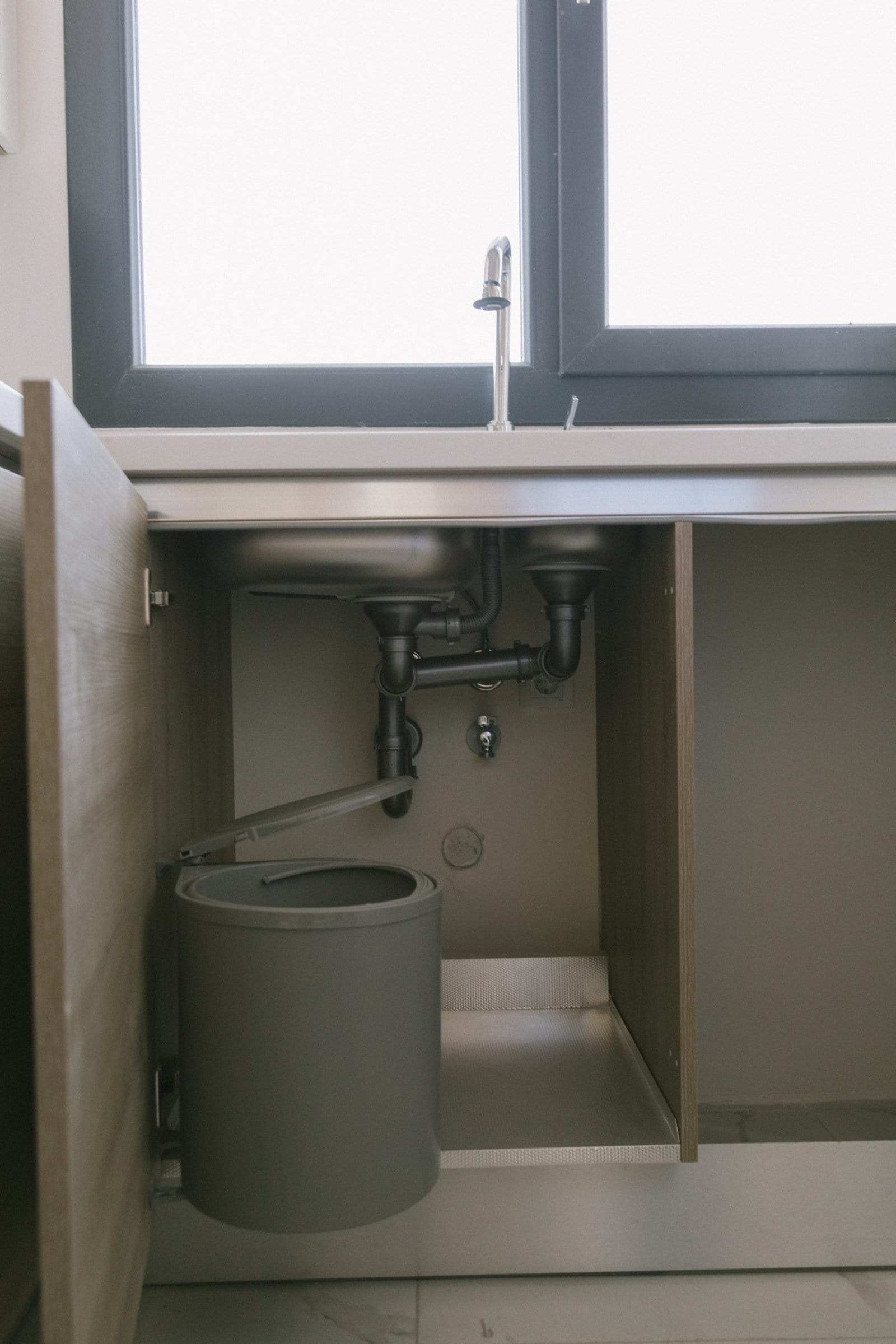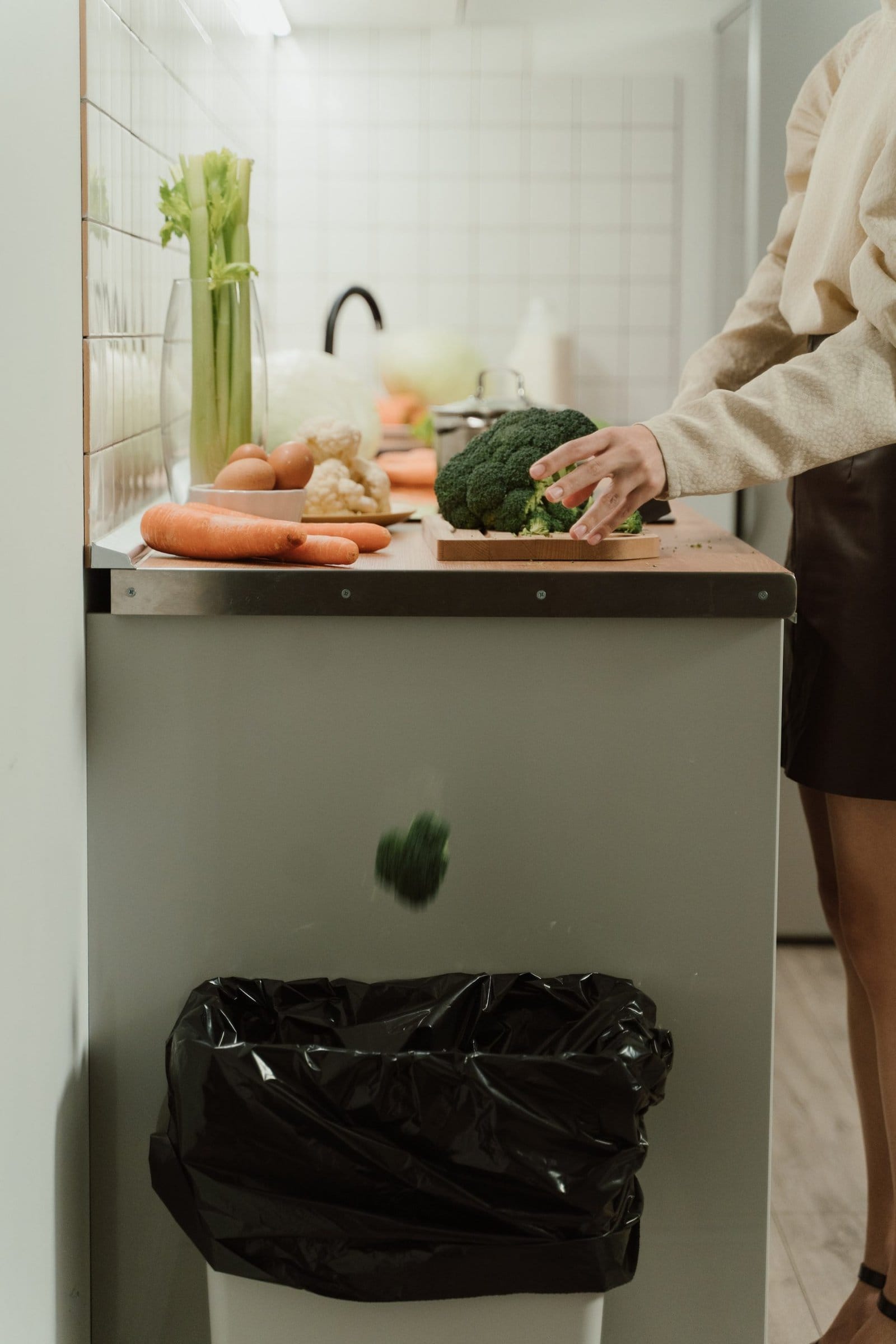Where To Put A Kitchen Trash Can
A kitchen is one of the happiest spaces in a home. It’s a space full of life and heart where you can whip up tasty treats and where the family can gather while preparing a festive meal. However, every good kitchen has a convenient waste disposal area where nasty spills, crumbs, and messes can be disposed of after a hearty cooking session.
If not done correctly, this unkempt garbage bin can draw more attention than any of the charming kitchen elements you worked so hard to showcase.
There are, thankfully, ways to ensure that waste disposal is both convenient and hidden away from the main cooking station, and is also functional and clean. It should also make the best use of the available space in your kitchen. Still stuck on where to put a trash can in your beloved kitchen? Here are some suggestions!
Close to the Sink
Positioning a trash bin adjacent to the sink can be a wise choice for compact kitchens. This option does not necessitate any additional installations and is also cost-effective.`All you need is a foot-pedal trash can or a swivel-lid bin for easy disposal, preferably a tall one that sustains adequate waste.
This sink-side location is ideal for discarding leftovers, crumbs, or other scraps while washing and prepping vegetables, or doing the dishes.
Under the Sink

If you have no qualms about placing a trash can next to the sink, you may also want to consider the option of placing it under the sink. This is yet another excellent option for small kitchens that requires no installation or mounting.
The space beneath the sink is often the most underutilized. Placing a trash can here maximizes floor space while also allowing you to dispose of waste while doing the dishes. If you’re concerned about the trash can being too noticeable here, you can conceal it with a simple sink curtain.
The only thing to be cautious of with under-the-sink garbage cans is to inspect them regularly for possible sink leaks that could seep into your garbage and cause a mess. Also, because this area attracts a lot of moisture, give it a good scrub regularly.
Stowed Away Under the Countertop
If you’re constantly annoyed by the sight of unsightly and messy garbage cans while cooking, this sneaky stowaway option under the countertop is perfect. Utilize an empty lower cabinet under your countertop for this. The trash bin can either be a freestanding can with a swing lid for easy disposal, or it can take on a fancier form such as a pull-out bin.
Another option is to have a presentable foot-pedal bin that can be stowed under an island countertop, making efficient use of space. Because the island is also where most of the kitchen’s prep work is done, having a trash can nearby is super handy.
Whether you’re unpacking groceries on your counter, chopping veggies, or prepping meals, an under-counter trash can is a time-saver that can help you clean as you cook.
End of the Counter

If your kitchen lacks under-counter space, the end of the counter works just as well, especially in small kitchens. This placement keeps your trash can a safe distance away from your main prepping and cooking station, while still being accessible.
You can neutralize the focus on this freestanding can by choosing a clean and sleek stainless steel bin and lining it with garbage bags daily to avoid a messy look.
Convenient Built-in/Pull-out Drawer
Is there anything more annoying than having to reach for a trash can, lift the lid and dispose of your kitchen waste? Or having to make frequent trips to an out-of-the-way trash can? In a place where time and energy are of the essence, a built-in or pull-out drawer can help you avoid such unnecessary kitchen tasks.
Consider encasing your trash can in a pull-out drawer or mounting it on the lower cabinet door so it pulls out or pivots when the door is opened. This not only allows you to stay organized and clean on your terms, but it also addresses the issue of hiding the waste bin in an otherwise attractive kitchen space.
If you have sufficient space and if you’re big on recycling, you can even incorporate a dual waste-disposal system for wet and dry waste.
If you want to take it a step further, you can create a lidded waste chute on your countertop that connects to a larger, concealed trash can underneath. This way, you can dispose of waste directly from the counter into the chute while still maintaining hygiene (since the chute has a lid).
While this requires a little more effort to install, the added convenience makes it worthwhile.
Hidden in a Closet
We understand that visible trash cans can be a stumbling block in many kitchens. Thank goodness for concealed storage! Now you can set aside an entire drawer or closet for waste disposal. Make sure it is close enough to your prepping station but far enough away to avoid contamination.
Keeping your garbage shut behind a closet is a simple but effective solution to waste-disposal woes. However, you might have to deal with the possibility of rotting wet waste in close confines, which can stink up the space.
Just ensure that you take the trash out at regular intervals, especially on days of heavy cooking, to avoid this issue.
In Conclusion
Placing a trash can in the kitchen is a dilemma that requires you to consider all factors such as hygiene, cleanliness, and aesthetics. The best way to decide is to analyze your kitchen space, consider how you can maximize its use, and ultimately see if it fits within your budget.
If you value simplicity, under-the-counter and under-the-sink storage is ideal. If appearance is a priority, you may want to invest in a pivoting pull-out drawer or a concealed storage system. Whatever you choose, make sure it retains the charm and soul of your original kitchen — after all, a happy kitchen equals a happy you!















